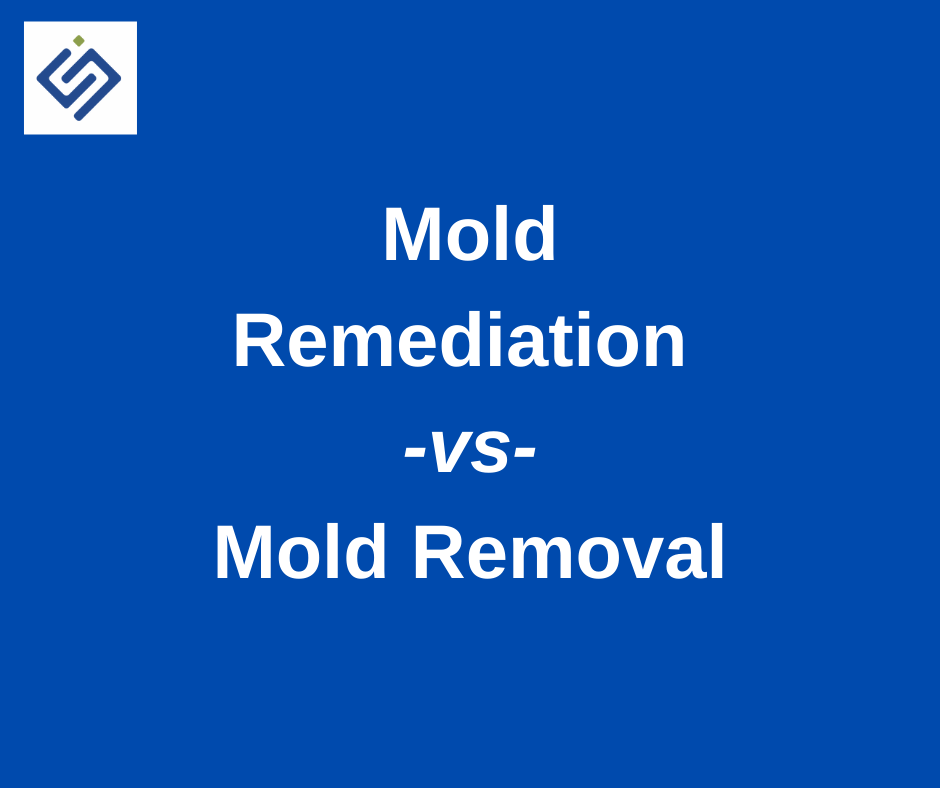Mold Remediation vs Mold Removal

Mold remediation and removal are the same service! The term you use for removing mold is not as important as the process for correctly and safely removing the mold. The EPA (Environmental Protection Agency) has developed guidelines to help homeowners and property owners to properly remove mold with the help of professionals.
EPA Mold Removal Guidelines:
Although you should read them yourself to absorb all of the information they provide, here is an overview of the EPA mold removal guidelines:
The EPA guidelines suggest mold removal depending upon the size and amount of visible mold. Non visible signs of mold as you can imagine are hard to remove and will need a higher level of expertise to find and eradicate which we will discuss later in the article.
The EPA guidelines base their mold removal guidelines on categories of mold affected area size, less than 10 square feet, 10-100 square feet, and over 100 square feet of visible mold. It addresses whether you should use containment and negative air pressure and how to use special disposal suits and face masks to make the project safer. For example, for a project addressing a mold area of less then 10 square feet you only need to use a face mask with a N-95 respirator, goggles and gloves, no containment is necessary for a project of this size. For any project with more than 10 square feet, it is suggested that professionals be involved and have a containment built immediately for the project. Also, mold industry approved Personal Protection Equipment (PPE) should be worn. Mold testing after you have completed the project is also important to ensure the mold is gone. The EPA, does not however answer how to test for mold or define when a mold removal project is complete. They do mention that certified professionals should be used to test for mold like those certified by the American Conference of Governmental Industrial Hygienists (ACGIH), or other professional organizations. Make sure that if someone claims to be a mold testing expert with credentials that they can prove that their credentials are equal to the ACGIH credentials or a Certified Industrial Hygienist credential, nothing equals these two forms of credential.
New York Health Department Mold Removal Guidelines:
Another option for mold removal guidelines is the New York Health Department (NYHD) version of mold damage restoration guidelines. NYHD makes the same suggestions for mold remediation or at least very close to, the EPA version. The NYHD guidelines were actually one of the first guidelines produced for the public nationwide for mold removal. The New York Health Department Mold Remediation Guidelines where once the norm for mold removal guidelines are almost never used today, the EPA and the IICRC guidelines are the most popular.
The IICRC S502 Standard for Professional Mold Remediation IICRC S502 Mold Remediation Guidelines:
The IICRC remediation S502 are a very comprehensive source, they not only describe what is expected but how to perform mold removal, and about mold itself. Where the other two guidelines are available free online, they come up short with details on all questions and topics on mold removal and remediation. The IICRC S502 are so well regarded, that most if not all Industrial Hygienists use the IICRC S502 guidelines for their recommendations on mold removal.
If a residential or commercial property has possible mold growth here is our suggestion. Call a certified Mold Removal company (like us at SI Restoration) who follows the IICRC S502 Professional Mold Remediation Guidelines to follow the appropriate steps from the beginning. Remember, Certified Industrial Hygienist are the only "mold testing" professionals whose reports will pass in most federal and local court systems so ensure a Certified Industrial Hygienist is being used for your project by asking the mold removal companies that you consider if they use an impartial Certified Industrial Hygienist for their mold removal projects. Certified Industrial Hygienists are actual scientists with actual scientific degrees, which compared to someone who has a certificate from a mold testing school or certified mold lab is superior.
Please call 443-701-0111, email info@si-restoration.com, or use our contact us page for more information on our water damage and mold removal services.